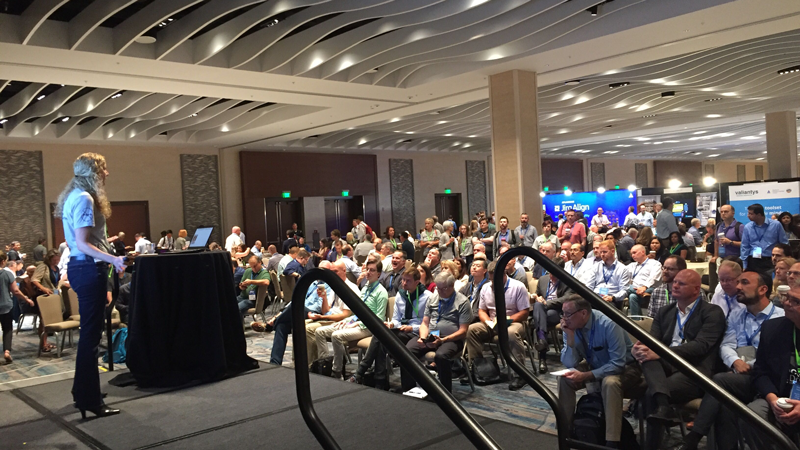
Respect for People is one of the pillars of Lean and of our culture at Planview AgilePlace. We’re very proud of the respectful culture we’ve built together. It’s something that visitors and newcomers comment on when they talk about our company.
But, as I had to confess at a recent company meeting, we haven’t worked as diligently on defining and training people on this “soft” pillar of Lean as we have the “hard” Continuous Improvement pillar (by implementing tools like Kanban, A3, Stop the Line, automation, etc).
In our defense, we’re not alone in this neglect. If you read the Lean-Agile literature or attend conferences, you’ll hear plenty about culture. But it’s usually not presented as systematically and tangibly as the Lean process tools. It can be mingled in with process concepts in a way that’s hard to untangle or can seem overly touchy-feely or theoretical brain science-y. It makes you think: This is probably profoundly true, but how on earth do I apply it?!
Like “eliminate waste,” Respect for People can seem obvious and easy, but it’s not as simple as it sounds. This isn’t just about being kinder and more respectful to one another in a common dictionary sense. We certainly should always be that, but Lean calls us to do much more.
Respect for People: Who Exactly?
Front-Line Workers
The people who Lean urges us to respect in particular are the front-line workers. Lean thinkers believe the best ideas for improving how we work and deliver value to customers come from the gemba – the place where the work happens. They come from the people who are there every day getting the job done. Lean respects these workers not only for the work they do, but also for the perspective that only they have.
As Peter Drucker realized when he coined the term knowledge worker, the people who do the work are experts in their respective crafts in ways their managers can’t be. Even if their managers used to be functional experts, they can’t stay in the weeds if they are to grow as leaders.
Workers are there to see the all-important details upon which good implementation decisions depend. And, they will often have to live with the results in a way nobody else truly does. They have the most urgent incentives to do things well.
A Charge for Lean Leaders
Lean thinkers also believe that the workers at the gemba want to do great work. Doing a good job satisfies our natural desire to be good at our craft. People don’t need supervisors monitoring daily compliance or taskmasters driving them to greater effort through carrots and sticks. They need leaders.
Lean asks executives to help people understand the purpose of their efforts and to keep teams aligned for maximum effectiveness. Managers are called to teach, to build the systems necessary to keep things working smoothly, and to ensure that their teams have the resources they need to succeed. As Edwards Deming might say, their job is the system; let the workers handle the work.
Team Effectiveness Outweighs Resource Efficiency
Lean thinkers believe that great results come from well-organized collaboration in teams, rather than from the solo efforts of even the most gifted individuals. “No brilliant jerks” – one of Planview AgilePlace’s founding mantras – isn’t a Lean idea, per se, but it fits awfully well.
What matters most isn’t individual skill or effort, but collective results. And that means hiring people who are well-suited to working in teams and managing-out those people who can’t or won’t. It means hiring people for whom Respect for People comes naturally and without question.
A Lean company will favor small, cross-functional teams that have most of the skills necessary to deliver work from concept to finished product. It will sometimes create “service centers” in order to manage rare specialists, or as a temporary tool for solving a hairy technical problem. For larger, more complex products and services, these standing teams will be organized into aligned teams of teams.
A truly Lean company will typically shift away from the traditional approach of allocating portions of people’s time to temporary project teams. Work should be delegated to standing teams rather than “resources” being pulled together ad hoc around the work. This is a trade-off. It can be less efficient in the short term, and it can risk the functional expertise and consistency of a technical approach.
Those are real concerns, but Lean believes that they can be better managed in other ways: Spotify’s guilds for example. And Lean believes the problems are outweighed by fewer hand-offs, shorter feedback loops, team cohesion, a stable process that allows for kaizen, and deeper domain knowledge (i.e. understanding the team’s target customer). A standing team of this sort can be trusted with autonomy because it has the tools necessary for independent success.
Autonomy Requires a Higher Level of Accountability
Lean teams are organized for autonomous collaboration among teammates. They are asked to hold themselves accountable for their commitments and continuous improvement and to surface the rare but toxic bad apples who could spoil things for everyone.
Lean leaders optimize for output rather than micromanaging busy-ness. They watch the baton, not the runners, and focus their efforts on improving the system by which their team and company move the baton.
A manager may be surprised by the results that an autonomous team produces. If the results are better than expected, that’s awesome. That’s the ultimate goal: True innovation driven by diversity of thought and experience, enabled by autonomy.
If results are different, but maybe just a bit worse than expected, the manager should accept the outcome with minimal meddling — as hard as that may be. Only if the outcome looks to be truly risky should they intervene.
This is one of the challenges for leaders in practicing Respect for People; allowing teams to truly own their results is worth some small missteps. Missteps provide opportunities to learn, which help teams deliver much better results, with better morale, in the long run.
Despite this focus on standing teams, an employee is ultimately a member of the company first and foremost. They may be assigned to a team at the moment, but they should be encouraged to thrive and grow and reach their full potential in whatever that means for them.
A mentoring manager will support this career growth, though it may inconvenience their department or team goals. This is out of both respect for the employee, who wants to do their best, and for the company, which benefits directly when people’s talents, interests, and responsibilities align.
Respect for People: A Virtuous, Productive Cycle
A business must deliver a steady stream of results for its customers and financial stakeholders. It can’t just be a nice place to work, full of nice people. But we believe that the best long-term results come from providing a sustainable, healthy work environment.
Good employees work hard because they want to do good work for customers and their fair share to help co-workers. Good managers aim for predictable, steadily improving results — not utilization, compliance, busy-ness, or attendance. It’s a virtuous, productive cycle.
At Planview AgilePlace, we’ll be studying these behavioral and managerial principles this year, updating our employee handbook, and training our teams. We’ll be looking to ‘core’ Toyota and Lean thinkers like Deming, Taiichi Ohno, Jim Womack, and Jeff Liker to learn how to implement and consistently practice Respect for People. We’ll also be studying leadership thinkers who aren’t specifically Lean like Patrick Lencioni, Peter Drucker, Stanley McChrystal and Dan Pink, who operate under the guiding truth that people want to do their best work.
We believe their ideas work better – and may only work effectively – in a company that’s continuously improving in a Lean-Agile manner. I look forward to sharing what we learn.




